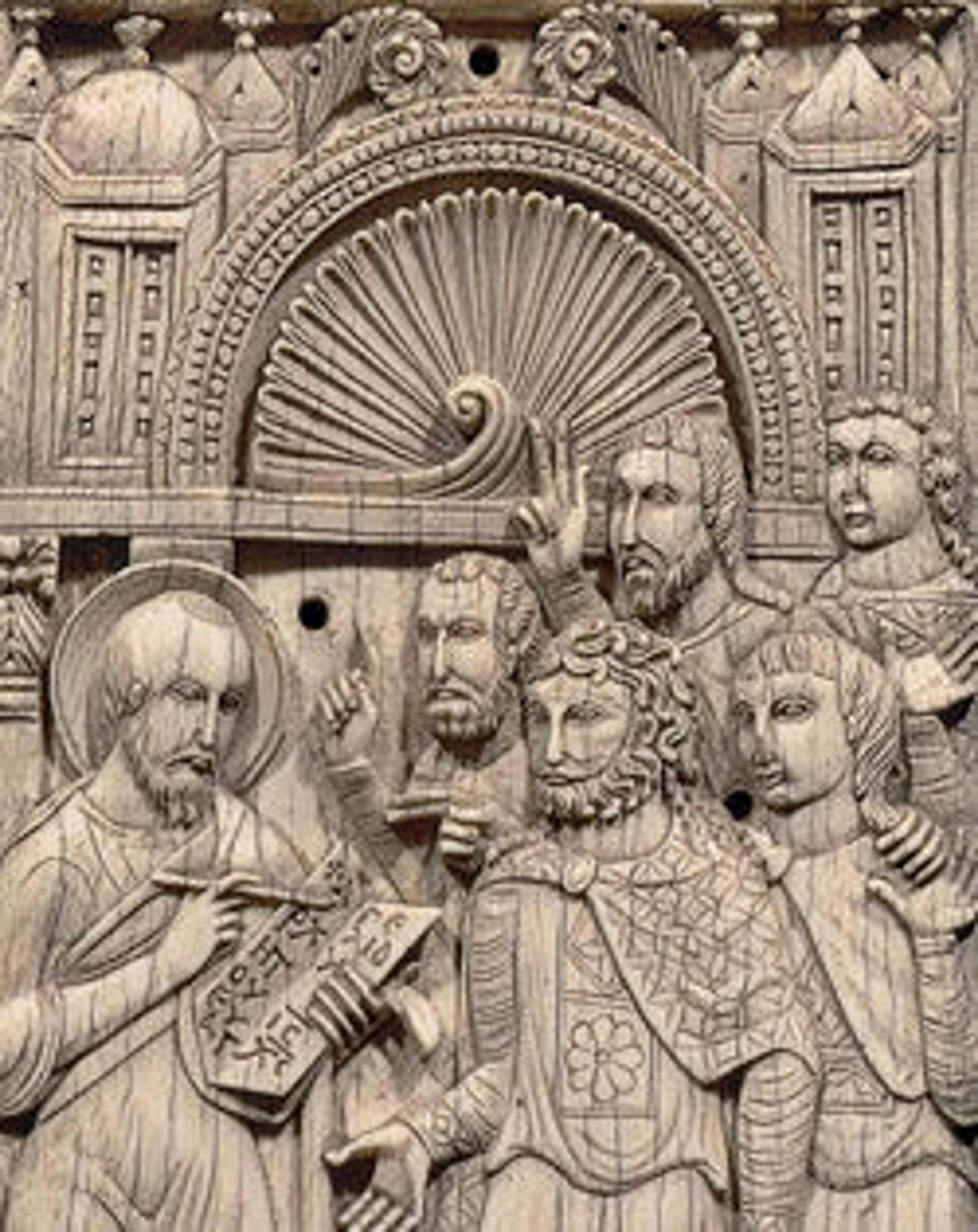Wall decoration with vegetal design
Stucco reliefs were commonly used to decorate the iwans and reception halls of elite Sasanian houses. Many examples were found in excavated houses in the Ctesiphon area including this relief from Ma’aridh IV consisting of a wavy vine with half palmettes. It was found with a relief with pomegranate designs (now in the Baghdad Museum) and probably formed the border around the edge of a larger pattern. The use of molds to make stuccos allowed for the creation of large scale repetitive patterns such as floral and vegetal motifs.
The city of Ctesiphon was located on the east bank of the Tigris River, 20 miles (32 km) south of modern Baghdad in Iraq. It flourished for more than 800 years as the capital of the Parthians and the Sasanians, the last two dynasties to rule the ancient Near East before the Islamic conquest in the seventh century. Systematic excavations in the Ctesiphon area were undertaken by an expedition in 1928–29 sponsored by the German Oriental Society (Deutsche Orient-Gesellschaft). The Metropolitan Museum of Art and the Staatliche Museen, Berlin, undertook a joint expedition for one season in 1931–32. Several excavations were conducted, including at the main palace (Taq-i Kisra), in a small fortified area south of the palace at Tell Dheheb, at multiple houses at the mounds of Ma’aridh, and at additional houses at a small mound called Umm ez-Za’tir.
Over the course of the excavations in the Ctesiphon area, six houses from a series of small mounds called el Ma’aridh were excavated. These houses follow typical Sasanian design with a mix of square and elongated rooms. The house at Ma’aridh IV was partially excavated and the exposed portions show both service and reception areas of the house. In the northeast corner of the excavations two rooms, one with pillars, were decorated with stuccos. A large courtyard with four niches probably was the center of the house. The southwest rooms seem to be more functional in nature and may have served as service rooms. One room may have functioned as a bath as indicated by the water channels excavated. A large house such as Ma’aridh IV was clearly an elite household as demonstrated by its large size (1200 square meters were excavated) and the decorated rooms.
The city of Ctesiphon was located on the east bank of the Tigris River, 20 miles (32 km) south of modern Baghdad in Iraq. It flourished for more than 800 years as the capital of the Parthians and the Sasanians, the last two dynasties to rule the ancient Near East before the Islamic conquest in the seventh century. Systematic excavations in the Ctesiphon area were undertaken by an expedition in 1928–29 sponsored by the German Oriental Society (Deutsche Orient-Gesellschaft). The Metropolitan Museum of Art and the Staatliche Museen, Berlin, undertook a joint expedition for one season in 1931–32. Several excavations were conducted, including at the main palace (Taq-i Kisra), in a small fortified area south of the palace at Tell Dheheb, at multiple houses at the mounds of Ma’aridh, and at additional houses at a small mound called Umm ez-Za’tir.
Over the course of the excavations in the Ctesiphon area, six houses from a series of small mounds called el Ma’aridh were excavated. These houses follow typical Sasanian design with a mix of square and elongated rooms. The house at Ma’aridh IV was partially excavated and the exposed portions show both service and reception areas of the house. In the northeast corner of the excavations two rooms, one with pillars, were decorated with stuccos. A large courtyard with four niches probably was the center of the house. The southwest rooms seem to be more functional in nature and may have served as service rooms. One room may have functioned as a bath as indicated by the water channels excavated. A large house such as Ma’aridh IV was clearly an elite household as demonstrated by its large size (1200 square meters were excavated) and the decorated rooms.
Artwork Details
- Title:Wall decoration with vegetal design
- Period:Sasanian
- Date:ca. 6th century CE
- Geography:Mesopotamia, Ctesiphon
- Culture:Sasanian
- Medium:Stucco
- Dimensions:2 11/16 × 17 5/8 × 1 15/16 in. (6.9 × 44.7 × 4.9 cm)
- Credit Line:Rogers Fund, 1932
- Object Number:32.150.46
- Curatorial Department: Ancient West Asian Art
More Artwork
Research Resources
The Met provides unparalleled resources for research and welcomes an international community of students and scholars. The Met's Open Access API is where creators and researchers can connect to the The Met collection. Open Access data and public domain images are available for unrestricted commercial and noncommercial use without permission or fee.
To request images under copyright and other restrictions, please use this Image Request form.
Feedback
We continue to research and examine historical and cultural context for objects in The Met collection. If you have comments or questions about this object record, please contact us using the form below. The Museum looks forward to receiving your comments.
